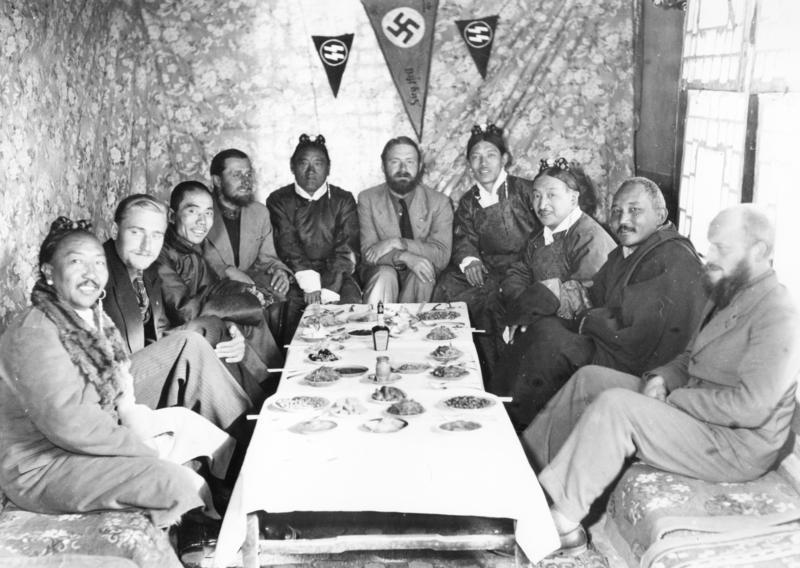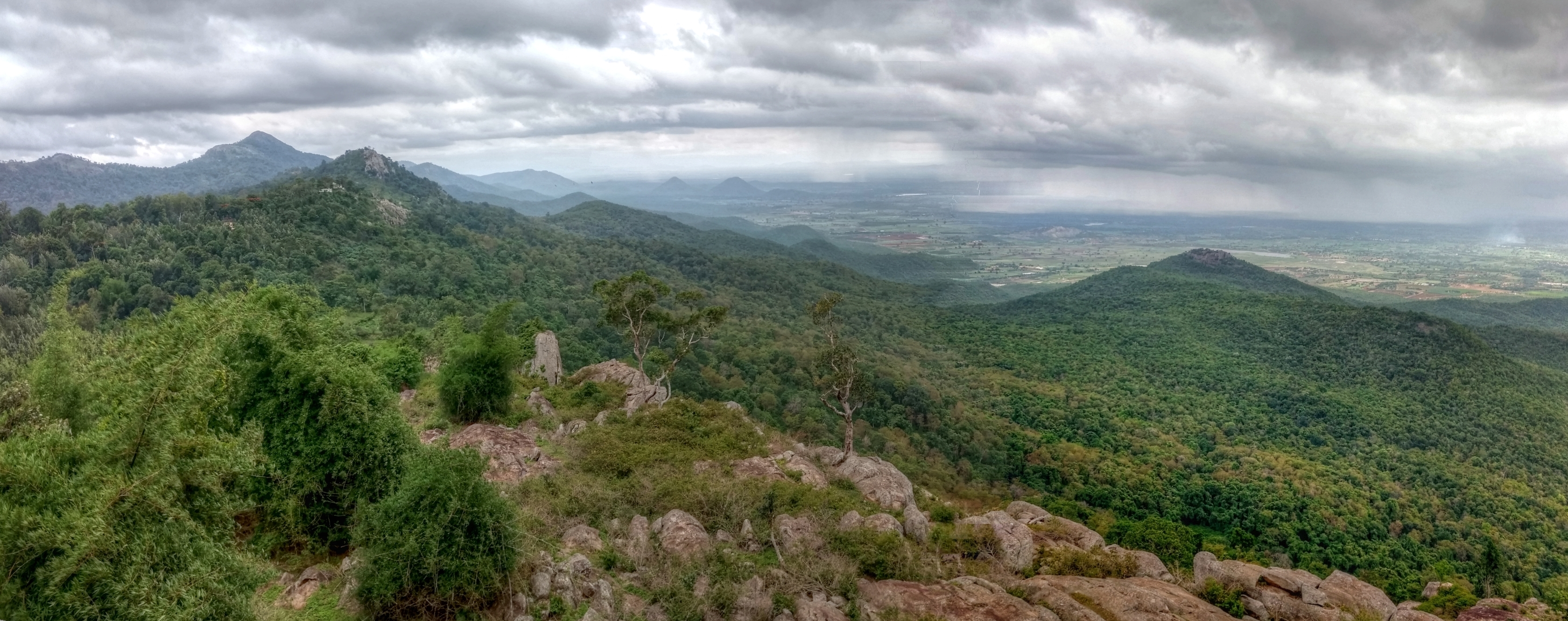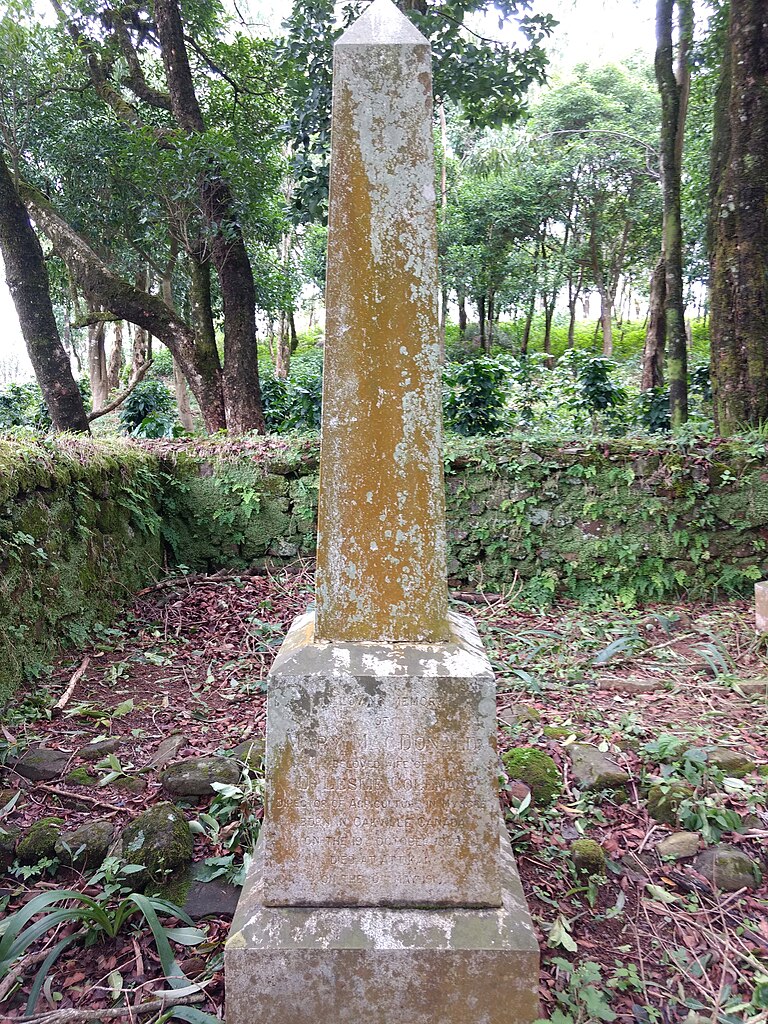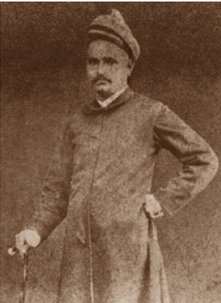Manipulative people have always made use of in- and out-group dynamics to create diversions from bigger issues. The situation is made worse when misguided philosophies are peddled by governments that put economics ahead of ecology. The pursuit of easily gamed targets like GDP is easier than ecological amelioration since money is a man-made and controllable entity. Nationalism, pride, other forms of chauvinism, the creation of enemies, and the magnification of war threats are all effective tools in the arsenal of Machiavelli for misdirecting the masses when things go wrong. One might imagine that those with better education, especially scientists, would be smart enough not to fall into these traps, but history dampen any such hopes of optimism.
There is a very interesting book in German by Eugeniusz Nowak called "Wissenschaftler in turbulenten Zeiten" (or scientists in turbulent times) that deals with the lives of ornithologists, conservationists and other naturalists during the Second World War. Preceded by a series of recollections published in various journals, the book was published in 2010 but I became aware of it only recently while translating some
biographies into the English Wikipedia. I have not yet actually seen the book (it has about five pages on Salim Ali as well) and have had to go by secondary quotations in other content. Nowak was a student of Erwin Stresemann (with whom the first chapter deals with) and he writes about several European (but mostly German, Polish and Russian) ornithologists and their lives during the turbulent 1930s and 40s. Although Europe is pretty far from India, there are ripples that reached afar. Incidentally, Nowak's ornithological research includes studies on the expansion in range of the collared dove (Streptopelia decaocto) which the Germans called the Türkentaube, literally the "Turkish dove", a name with a baggage of cultural prejudices.
Nowak's first paper of "recollections" notes that: [he] presents the facts not as accusations or indictments, but
rather as a stimulus to the younger generation of scientists to consider
the issues, in particular to think “What would I have done if I had
lived there or at that time?” - a thought to keep as you read on.
A shocker from this period is a paper by Dr Günther Niethammer on the birds of Auschwitz (Birkenau). This paper (read it online here) was published when Niethammer was posted to the security at the main gate of the concentration camp. You might be forgiven if you thought he was just a victim of the war. Niethammer was a proud nationalist and volunteered to join the Nazi forces in 1937 leaving his position as a curator at the Museum Koenig at Bonn.
 |
| G. Niethammer |
Niethammer studied birds around Auschwitz and also shot ducks in numbers for himself and to supply the commandant of the camp Rudolf Höss (if the name does not mean anything please do go to the linked article / or search for the name online). Upon the death of Niethammer, an obituary (open access PDF here) was published in the Ibis of 1975 - a tribute with little mention of the war years or the fact that he rose to the rank of Obersturmführer. The Bonn museum journal had a special tribute issue noting the works and influence of Niethammer. Among the many tributes is one by Hans Kumerloeve (starts here online). A subspecies of the common jay was named as Garrulus glandarius hansguentheri by Hungarian ornithologist Andreas Keve in 1967 after the first names of Kumerloeve and Niethammer. Fortunately for the poor jay, this name is a junior synonym of G. g. anatoliae
described by Seebohm in 1883.
Meanwhile inside Auschwitz, the Polish artist Wladyslaw Siwek was making sketches of everyday life in the camp. After the war he became a zoological artist of repute. Unfortunately there is very little that is readily accessible to English readers on the internet (beyond the Wikipedia entry).
Meanwhile inside Auschwitz, the Polish artist Wladyslaw Siwek was making sketches of everyday life in the camp. After the war he became a zoological artist of repute. Unfortunately there is very little that is readily accessible to English readers on the internet (beyond the Wikipedia entry).
 |
| Siwek, artist who documented life at Auschwitz before working as a wildlife artist. |
Now for Niethammer's friend Dr Kumerloeve who also worked in the Museum Koenig at Bonn. His name was originally spelt Kummerlöwe and was, like Niethammer, a doctoral student of Johannes Meisenheimer. Kummerloeve and Niethammer made journeys on a small motorcyle to study the birds of Turkey. Kummerlöwe's political activities started earlier than Niethammer, joining the NSDAP (German: Nationalsozialistische Deutsche Arbeiterpartei = The National Socialist German Workers' Party) in 1925 and starting the first student union of the party in 1933. Kummerlöwe soon became a member of the Ahnenerbe, a think tank meant to provide "scientific" support to the party-ideas on race and history. In 1939 he wrote an anthropological study on "Polish prisoners of war". At the museum in Dresden that he headed, he thought up ideas to promote politics and he published his ideas in 1939 and 1940. After the war, it is thought that he went to all the European libraries that held copies of this journal (Anyone interested in hunting it should look for copies of Abhandlungen und Berichte aus den Staatlichen Museen für Tierkunde und Völkerkunde in Dresden 20:1-15.) and purged them of the article which would incriminate him. According to Nowak, he even managed to get his hands (and scissors) on copies of the journal held in Moscow and Leningrad!
The Dresden museum was also home to the German ornithologist Adolf Bernhard Meyer (1840–1911). In 1858, he translated the works of Charles Darwin and Alfred Russel Wallace into German and introduced evolutionary theory to a whole generation of German scientists. Among Meyer's amazing works is a series of avian osteological works which uses photography and depicts birds in nearly-life-like positions (wonder how it was done!) - a less artistic precursor to Katrina van Grouw's 2012 book The Unfeathered Bird. Meyer's skeleton images can be found here. In 1904 Meyer was eased out of the Dresden museum because of rising anti-semitism. Meyer does not find a place in Nowak's book.
The Dresden museum was also home to the German ornithologist Adolf Bernhard Meyer (1840–1911). In 1858, he translated the works of Charles Darwin and Alfred Russel Wallace into German and introduced evolutionary theory to a whole generation of German scientists. Among Meyer's amazing works is a series of avian osteological works which uses photography and depicts birds in nearly-life-like positions (wonder how it was done!) - a less artistic precursor to Katrina van Grouw's 2012 book The Unfeathered Bird. Meyer's skeleton images can be found here. In 1904 Meyer was eased out of the Dresden museum because of rising anti-semitism. Meyer does not find a place in Nowak's book.
 |
| Niethammer stands behind Salim Ali, 1967. International Ornithological Congress, 1967 |
Nowak's book includes entries on the following scientists: (I keep this here partly for my reference as I intend to improve Wikipedia entries on several of them as and when time and resources permit. Would be amazing if others could pitch in!).
- Erwin Stresemann (1889 - 1972)
- Friedrich Tischler (1881 - 1945)
- Lew Osipowitsch Belopolskij (1907 - 1990)
- Jurij Andrejewitsch Isakow (1912 - 1988)
- Veleslav Wahl (1922 -1950)
- Wladyslaw Rydzewski (1911 - 1980)
- Andrzej Dunajewski (1908 -1944)
- Günther Niethammer (1908 - 1974)
- Hans Kummerlöwe alias Kumerloeve (1903 -1995)
- Wladyslaw Siwek (1907 -1983)
- Wlodzimierz Graf Dzieduszycki (1885 - 1971)
- Ferdinand Pax (1885 -1964)
- Kazimierz Szarski (1904 -1960)
- Werner Klemm (1909 -1990)
- Boris Karlowitsch Stegmann (1898 -1975)
- Nikolaj Alexejewitsch Gladkow (1905 - 1975)
- Hong-Gu Won (1888 -1970) - came to learn of his son lost during partition via a Daurian starling that happened to be ringed by his son!
- Pyong-Oh Won (born 1926) son of previous
- Jean Delacour (1890 -1985)
- Kazimierz von Granöw Wodzicki (1900 - 1987)
- Nikolaj Wladimirowitsch Timofejew-Ressowski (1900 -1981)
- Hans Stubbe (1902 -1989)
- Konrad Lorenz (1903 -1989)
- Jan Sokolowski (1899 -1982)
- Roman Wojtusiak (1906 -1987)
- Bernhard Grzimek (1909 -1987)
- Hans Christian Johansen (1897 -1973)
- Wasilij Nikolajewitsch Skalon (1903 - 1976)
- Wolfgang Makatsch (1906 -1983)
- Tso-hsin Cheng (1906 -1998)
- Nikolaj Boew (1922 -1985)
- Hans Schildmacher (1907 -1976)
- Oleg Ismailowitsch Semenow-Tjan-Schanskij (1906 -1990)
- Alexander Bogdanowitsch Kistiakowskij (1904 - 1983)
- Heinrich Dathe (1910 -1991)
- Erich Rutschke (1926 -1999)
- Georgij Petrowitsch Dementjew (1898 - 1969)
- Alexander Nikolajewitsch Formosow (1899 - 1973)
- Pierre Pfeffer (1927 - 2016)
- Micha Jankowski (1842 - 1912)
- Alexander Michailowitsch Jankowski (1876 -1944)
- Jurij Michailowitsch Jankowski (1879 - 1956)
- Walerij Jurewitsch Jankowski (1911 -)
- Charles Vaurie (1906 -1975)
- Walter Beick (1883 - 1933)
- Richard Meinertzhagen (1878 -1967)
- Wilfried Przygodda (1916 -1991)
- Salim Ali (1896 -1987)
- Boris Michailowitsch Pavlov (1933 - 1994)
In the first of his "recollection papers" (his 1998 article) Nowak writes about the reason for writing them - noticing that the obituary for Prof. Ernst Schäfer was a whitewash that carefully avoided any mention of his wartime activities. And this brings us to India. In a recent article in Indian Birds, Sylke Frahnert and coauthors have written about the bird collections from Sikkim in the Berlin natural history museum. In their article there is a brief statement that "The collection in Berlin has remained almost unknown due to the political circumstances of the expedition". This might be a bit cryptic for many but the best read on the topic is Himmler's Crusade: The true story of the 1939 Nazi expedition into Tibet (2009) by Christopher Hale. Hale writes:
He [Himmler] revered the ancient cultures of India and the East, or at least his own weird vision of them.
These were not private enthusiasms, and they were certainly not harmless. Cranky pseudoscience nourished Himmler’s own murderous convictions about race and inspired ways of convincing others...
Himmler regarded himself not as the fantasist he was but as a patron of science. He believed that most conventional wisdom was bogus and that his power gave him a unique opportunity to promulgate new thinking. He founded the Ahnenerbe specifically to advance the study of the Aryan (or Nordic or Indo-German) race and its origins
From there, Hale goes on to examine the motivations of Schäfer and his team. He looks at how much of the science was politically driven. Swastika signs dominate some of the photos from the expedition - as if it provided for a natural tie with Buddhism in Tibet. It seems that Himmler gave Schäfer the opportunity to rise within the political hierarchy. The team that went to Sikkim included Bruno Beger. Beger was a physical anthropologist but with less than innocent motivations although that would be much harder to ascribe to the team's other pursuits like botany and ornithology. One of the results from the expedition was a film made by the entomologist of the group, Ernst Krause - Geheimnis Tibet - or secret Tibet - a copy of this 1 hour and 40 minute film is on YouTube. At around 26 minutes, you can see Bruno Beger creating face casts - first as a negative in Plaster of Paris from which a positive copy was made using resin. Hale talks about how one of the Tibetans put into a cast with just straws to breathe from went into an epileptic seizure from the claustrophobia and fear induced. The real horror however is revealed when Hale quotes a May 1943 letter from an SS officer to Beger - ‘What exactly is happening with the Jewish heads? They are lying around and taking up valuable space . . . In my opinion, the most reasonable course of action is to send them to Strasbourg . . .’ Apparently Beger had to select some prisoners from Auschwitz who appeared to have Asiatic features. Hale shows that Beger knew the fate of his selection - they were gassed for research conducted by Beger and August Hirt.
 |
| SS-Sturmbannführer Schäfer at the head of the table in Lhasa |
In all, Hale makes a clear case that the Schäfer mission had quite a bit of political activity underneath. We find that Sven Hedin (Schäfer was a big fan of him in his youth. Hedin was a Nazi sympathizer who funded and supported the mission) was in contact with fellow Nazi supporter Erica Schneider-Filchner and her father Wilhelm Filchner in India, both of whom were interned later at Satara, while Bruno Beger made contact with Subhash Chandra Bose more than once. [Two of the pictures from the Bundesarchiv show a certain Bhattacharya - who appears to be a chemist working on snake venom at the Calcutta snake park - one wonders if he is Abhinash Bhattacharya.]
My review of Nowak's book must be uniquely flawed as I have never
managed to access it beyond some online snippets and English reviews. The war had impacts on the entire region and Nowak's coverage is limited and there were many other interesting characters including the Russian ornithologist Malchevsky who survived German bullets thanks to a fat bird observation notebook in his pocket! In the 1950's Trofim Lysenko, the crank scientist who controlled science in the USSR sought Malchevsky's help in proving his own pet theories - one of which was the ideas that cuckoos were the result of feeding hairy caterpillars to young warblers!
Issues arising from race and perceptions are of course not restricted to this period or region, one of the less glorious stories of the Smithsonian Institution concerns the honorary curator Robert Wilson Shufeldt (1850 – 1934), who, in the infamous Audubon affair, made his personal troubles with his second wife, a grand-daughter of Audubon, into one of race. He also wrote such books as America's Greatest Problem: The Negro (1915) in which we learn of the ideas of other scientists of the period like Edward Drinker Cope! Like many other obituaries, Shufeldt's is a classic whitewash.
 Even as recently as 2015, the University of Salzburg withdrew an honorary doctorate that they had given to the Nobel prize winning Konrad Lorenz for his support of the political setup and racial beliefs. It should not be that hard for scientists to figure out whether they are on the wrong side of history even if they are funded by the state. Perhaps salaried scientists in India would do well to look at the legal contracts they sign with their employers, especially the state, more carefully. The current rules make government employees less free than ordinary citizens but will the educated speak out or do they prefer shackling themselves.
Even as recently as 2015, the University of Salzburg withdrew an honorary doctorate that they had given to the Nobel prize winning Konrad Lorenz for his support of the political setup and racial beliefs. It should not be that hard for scientists to figure out whether they are on the wrong side of history even if they are funded by the state. Perhaps salaried scientists in India would do well to look at the legal contracts they sign with their employers, especially the state, more carefully. The current rules make government employees less free than ordinary citizens but will the educated speak out or do they prefer shackling themselves.
Postscripts:
 Even as recently as 2015, the University of Salzburg withdrew an honorary doctorate that they had given to the Nobel prize winning Konrad Lorenz for his support of the political setup and racial beliefs. It should not be that hard for scientists to figure out whether they are on the wrong side of history even if they are funded by the state. Perhaps salaried scientists in India would do well to look at the legal contracts they sign with their employers, especially the state, more carefully. The current rules make government employees less free than ordinary citizens but will the educated speak out or do they prefer shackling themselves.
Even as recently as 2015, the University of Salzburg withdrew an honorary doctorate that they had given to the Nobel prize winning Konrad Lorenz for his support of the political setup and racial beliefs. It should not be that hard for scientists to figure out whether they are on the wrong side of history even if they are funded by the state. Perhaps salaried scientists in India would do well to look at the legal contracts they sign with their employers, especially the state, more carefully. The current rules make government employees less free than ordinary citizens but will the educated speak out or do they prefer shackling themselves. Postscripts:
- Mixing natural history with war sometimes led to tragedy for the participants as well. In the case of Dr Manfred Oberdörffer who used his cover as an expert on leprosy to visit the borders of Afghanistan with entomologist Fred Hermann Brandt (1908–1994), an exchange of gunfire with British forces killed him although Brandt lived on to tell the tale.
- To the above list one should add - Jean-Marie Derscheid.
- Another story to read - about biology and the Nazi era is about the SS Sammelkommando - see Heinz Brücher
- Apparently Himmler's entanglement with ornithology also led him to dream up "Storchbein Propaganda" - a plan to send pamphlets to the Boers in South Africa via migrating storks! The German ornithologist Ernst Schüz quietly (and safely) pointed out the inefficiency of it purely on the statistics of recoveries!
- July 2018 - an English translation of Nowak's book is now available.
- See also Walther Arndt - Charles McGlashan


































